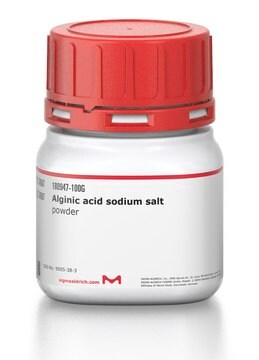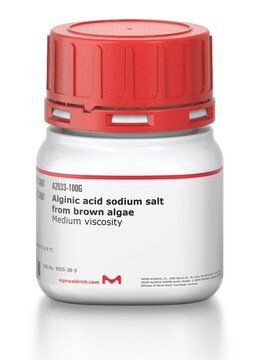W306509
Thyme oil
white, FG
About This Item
Produits recommandés
Source biologique
Thymus vulgaris and/or Thymus zygis oil
Qualité
FG
Fragrance grade
Halal
Kosher
Agence
follows IFRA guidelines
Conformité réglementaire
EU Regulation 1223/2009
EU Regulation 1334/2008 & 872/2012
FDA 21 CFR 182.2
Activité optique
[α]20/D −1°, neat
Origine
France origin
Indice de réfraction
n20/D 1.502
Point d'ébullition
195 °C
Densité
0.917 g/mL at 25 °C
Application(s)
flavors and fragrances
Documentation
see Safety & Documentation for available documents
Allergène alimentaire
no known allergens
Allergène de parfum
linalool, citral (neral+geranial), limonene (sum of D, L and DL), geraniol, α-pinene and β-pinene
Propriétés organoleptiques
herbaceous; camphoraceous
Vous recherchez des produits similaires ? Visite Guide de comparaison des produits
Catégories apparentées
Description générale
Application
- Obliteration of H. pylori infection through the development of a novel thyme oil laden nanoporous gastric floating microsponge.: This study presents an innovative application of thyme oil encapsulated within nanoporous microsponges designed to target and eradicate Helicobacter pylori in the stomach, demonstrating the potential of natural compounds in medical applications (Jafar et al., 2024).
- Experimental trials to assess the immune modulatory influence of thyme and ginseng oil on NDV-vaccinated broiler chickens.: This research evaluates the immunomodulatory effects of thyme oil on vaccinated poultry, suggesting its utility in enhancing immune responses in agricultural practices (Hassanin et al., 2024).
- Antimicrobial polysaccharide hydrogels embedded with methyl-β-cyclodextrin/thyme oil inclusion complexes for exceptional mechanical performance and chilled chicken breast preservation.: Highlights the development of polysaccharide-based hydrogels incorporating thyme oil for food preservation, showcasing its antibacterial properties and potential for extending the shelf life of perishable goods (Chen et al., 2024).
- Corn cob nanocellulose packaging for increasing the shelf life of food products.: Investigates the role of thyme oil in biodegradable packaging solutions, enhancing the antimicrobial properties of corn cob nanocellulose composites, which could revolutionize sustainable packaging technologies (Cheran et al., 2024).
- Evaluation of the effectiveness of natural extract as a substituent for synthetic preservatives and antioxidants in pharmaceutical preparations.: Examines thyme oil′s efficacy as a natural preservative in pharmaceutical products, promoting its application as a safer alternative to synthetic additives (Al-Rimawi et al., 2024).
Actions biochimiques/physiologiques
Mention d'avertissement
Danger
Mentions de danger
Conseils de prudence
Classification des risques
Flam. Liq. 3 - Skin Corr. 1B
Code de la classe de stockage
3 - Flammable liquids
Classe de danger pour l'eau (WGK)
WGK 2
Point d'éclair (°F)
140.0 °F - closed cup
Point d'éclair (°C)
60 °C - closed cup
Équipement de protection individuelle
Faceshields, Gloves, Goggles, type ABEK (EN14387) respirator filter
Faites votre choix parmi les versions les plus récentes :
Déjà en possession de ce produit ?
Retrouvez la documentation relative aux produits que vous avez récemment achetés dans la Bibliothèque de documents.
Notre équipe de scientifiques dispose d'une expérience dans tous les secteurs de la recherche, notamment en sciences de la vie, science des matériaux, synthèse chimique, chromatographie, analyse et dans de nombreux autres domaines..
Contacter notre Service technique





